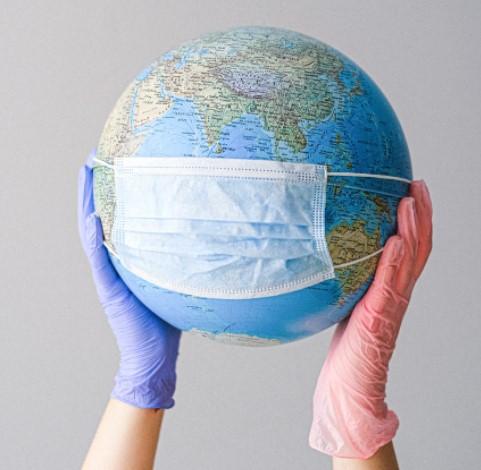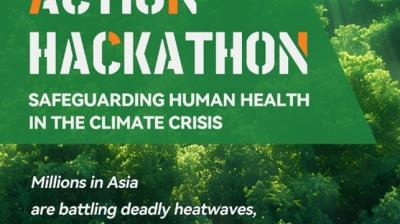WMO COVID-19 Task Team update on the science of seasonality
As the mid-latitude countries of the Northern Hemisphere enter a second winter of the COVID-19 pandemic, the role that seasonality plays in the risk of COVID-19 transmission has again taken centre stage.
Many, but not all, temperate zone countries experienced significant COVID-19 peaks in the winter of 2020-2021, and in the late fall of 2021 there has been a troubling rise in cases in many of the same regions.
At the same time, this rise has occurred against the background of new COVID-19 variants and varying vaccination rates across countries and between regions within single countries. This raises the question of whether seasonality and other forms of weather variability play an important role in risk when considered relative to other factors, and whether we are at a stage in the pandemic when seasonal disease patterns should be considered in COVID-19 preparedness and response strategies.
In March 2021, the WMO’s Task Team on Meteorological and Air Quality Factors in the COVID-19 Pandemic released their first report. That synthesis, which considered peer reviewed literature published prior to mid-January 2021, highlighted the well-known fact that respiratory viral infections frequently exhibit some form of seasonality. The report noted, however, that the underlying mechanisms that drive seasonality of respiratory viral infections are not yet well understood, and that in the first year of the COVID-19 pandemic transmission risk responded more strongly to policy and behavioral change than it did to seasonal weather conditions.
Since then, research on COVID-19 seasonality has advanced. A longer, more reliable COVID-19 data record, combined with the time and learning required for research groups to isolate seasonality signals from confounding variables, has yielded a number of epidemiological studies that robustly demonstrate seasonally-mediated risk patterns.
Complementary laboratory and epidemiological research has shown environmental sensitivities of the virus and of observed disease patterns that are generally consistent with results on prevailing seasonality. These studies point to higher risk of transmission in winter in temperate zones, and, indeed, many mid-latitude countries have experienced waves of infections in fall and winter.
At the same time, however, major COVID-19 transmission peaks were observed in many countries in the warm seasons of 2021, and dangerous variants have emerged independent of seasonality—for example, the highly contagious Omicron variant, which is understood to have originated in southern Africa during the southern hemisphere spring season.
Thus, scientific evidence of seasonal effects on transmission has become stronger, but significant and sometimes dominant risk factors can emerge at any time of the year.
“For meteorological and health services, evidence of COVID-19 seasonality does have potential value for disease preparedness and response. It makes sense to prepare for increases in COVID-19 case numbers and severity in cold seasons in colder climate zones, and meteorological services can work with health services to communicate this message and to plan for distribution of adequate health resources and information,” says Dr Ben Zaitchik of Johns Hopkins University and co-chair of the WMO COVID-19 Task Team.
“At the same time, our Task Team’s evaluation is that seasonal patterns need to be considered in the context of broader risk profiles. Summer in the respective hemispheres cannot simply be assumed to be a lower risk period, considering the potential for new variants to emerge at any time, the likelihood that seasonal influence is behaviorally mediated, and the fact that high positivity rates in any season present a major risk of continued transmission. Any use of seasonality in setting COVID-19 risk mitigation policies, then, should take place in the context of comprehensive risk analysis that considers the status of local and global positivity rates, the presence of novel variants, local vaccination rates, and other non-meteorological factors relevant to transmission dynamics,” says Dr. Zaitchik.
Roundtable on Seasonal Factors

This topic was addressed in the virtual WMO COVID19 Task Team’s Roundtable on Seasonal Factors in the COVID-19 Pandemic, held in September 2021.
A research panel (Dr. Gordon Nichols of UK Health Security Agency, former Public Health England, Dr. David Fisman of University of Toronto, and Dr. Rachel Lowe, of the London School of Hygiene and Tropical Medicine) reviewed current knowledge on the seasonality of COVID-19 and similar respiratory viral diseases, and a panel of experts in operational meteorology, epidemiology, and health (Dr. Ken Takahashi of the Geophysical Institute of Peru, Dr. Anca Brookshaw, of the European Center for Medium-range Weather Forecasts, Dr. Alan Diener of Health Canada, and Dr. Elizabeth Lee of Johns Hopkins University) assessed status and potential for integrating information on meteorology and seasonality into operational COVID-19 risk models.
As discussed at that roundtable event, there is both opportunity and risk in the emerging appreciation of seasonal and other climatic influence on COVID-19.
With regard to evidence of meteorological influence, Xavier Rodó, a WMO COVID-19 Task Team member and Head of the Climate & Health programme at ISGlobal, Barcelona, Spain, notes that “at this point, we can detect and quantify the consistent and at times strong role of low temperatures and low absolute humidities in facilitating COVID-19 propagation in different regions, which adds on top of density-dependent factors. This facilitated spread operates in a threshold-dependent way as in other seasonal respiratory viruses. However, turning this information into actionable early-warning systems will require concerted efforts and international actions, such as those that can be capitalized by WMO and other agencies.”
At the same time there is reason for caution.
Dr. Lowe, also a Task Team member, draws attention to the question of the relative magnitude of observed meteorological influence: “the variation in COVID-19 transmission across the globe can only be minimally explained by meteorological factors, such as temperature and absolute humidity. Other factors including vaccine coverage, new variants, government interventions and personal protection measures play a far more dominant role. We will need more data over a longer period of time before we can draw robust conclusions about the seasonal nature of COVID-19, ” according to Dr. Lowe.
Task Team member Dr. Takahashi considers the perspective of operational meteorological service providers, and emphasizes that “based on a stronger scientific basis, National Meteorological Services, working closely with the health sector, could develop and deliver valuable information products and services to fight the pandemic; however, meteorological, climatic or environmental effects should not be the only justification for making COVID-related decisions, particularly for relaxing prevention measures.”
It is also important to appreciate that seasonal sensitivities can be culturally and climatically contextual: a relatively cold season in a warm climate zone might enable more outdoor activities and greater ventilation, potentially reducing transmission risk, while a cold season in a colder climate drives people indoors to poorly ventilated spaces, increasing risk. Or, to take another case, holidays associated with increased travel and large gatherings can pose significant risks for a COVID-19 spike even when they take place in the warm season, as was observed after the 2020 Christmas holidays in some southern hemisphere countries.











